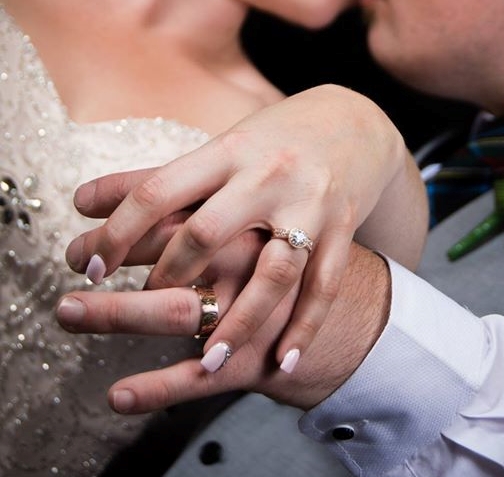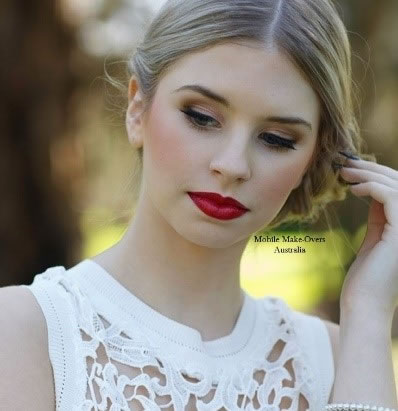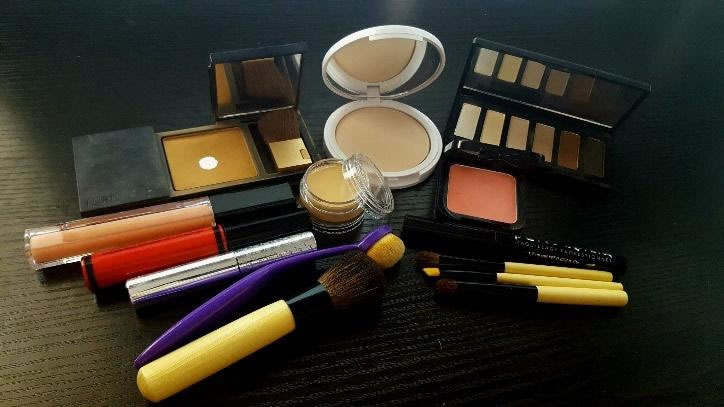Wedding traditions, there are so many of them, but do we really understand them, or how they came to be? Where did they come from? What do they mean?� Do we still have to keep them? Are they obsolete?...
Wedding traditions, there are so many of them, but do we really understand them, or how they came to be?
Where did they come from? What do they mean?� Do we still have to keep them? Are they obsolete? Are they as romantic as they seem??
Being that I have worked in the wedding industry for over 22years now, I have heard and seen my fair share of wedding traditions. Some new, some I�d never heard of, and many are staples of countless weddings today.� But very few people really know why they follow them, or what they originally mean.� You will be surprised at how unbelievably UNROMANTIC many of them are.
So, here is some background on 12 of the most popular wedding traditions;
1 � Giving away of the bride
My best friend hates this tradition and refused to do it for her wedding, which is completely fine.� She is a strong independent woman and hates the idea of being owned by anyone to be given away, and thus walked herself down the aisle. However, many� actually most of my clients do not share her thoughts on this, but maybe they don�t know its origin, or maybe like me, they have changed their own personal meanings for it. I had no specific plans on who walked me down the aisle, until the time came, and I literally just grabbed both my parent�s hands and I walked them down the aisle. I am a strong and independent woman as well, and my personal meaning for it, is that without these 2 parents, I would not be who I am today, they have raised, loved and supported me my whole life, and now they happily share that role with my new husband.
ORIGIN AND MEANING= Marriages were usually arranged by families, as a way to improve social status, income and relationships between communities and countries. Fathers often considered their daughters as forms of assets they could use to bargain with.� For this reason, it became the norm for the head of the family, which was usually the father or grandfather of the bride to literally give his female offspring away to improve the family situation.� There are many cultures today, who still practice this.
�
2 � White wedding dress
It�s now become a tradition to get your besties and your mum together and do a big dress shop day, or 2, or 3 or 4�� You go to all the best wedding dress shops and try on a stack of dresses to find that �perfect dress�. I�ve even heard of many brides making a weekend interstate trip to do so and then there are also some women, who just do this for fun, without being engaged at all.
ORIGIN AND MEANING= White wedding dresses are, actually a fairly new tradition, as is shopping for one.� Up until 1840, women would simply choose their best dress to wear, or wear a dress owned by a family member.� There were no wedding dress shops to go into with your bridesmaids, no no. It was literally, which is the best dress you have access to?� And it was quite often a dark colour like black, red, or brown. The white dress was brought into play by Queen Victoria of England when she first wore a white wedding dress for her own wedding in 1840 and thus started the long-standing fashion tradition. After then, the white wedding dress was considered a family heirloom passed down through generations, something we very rarely do now.� Some cultures also believe that a non-white wedding dress signifies the bride is not a virgin.
�
3 � Bridal veil
You walk down the aisle, he lifts your veil and reveals your beautiful morning hair and makeup preparations with a smile, before your first kiss as spouses. It really makes you feel like a bride.� But where did this come from??
ORIGIN AND MEANING= There are 2 main purposes for veils.
#1; When marriages were arranged, the bride and groom often never met until their wedding day.� So, to stop the man from backing out if his bride was not as aesthetically pleasing as he had hoped, the bride would wear a veil.� By the time the �flippy thing� as my husband calls it, is done, they are already officially married.� This is also where the superstition of not seeing each other before the ceremony came about as well.� That first look photo of the groom that all photographers aim to capture nowadays, stems from the fact they often were not allowed to meet prior, so they could not back out of it.� Oh, how sweet�.
#2; Another similar reason is; If the bride was categorised as aesthetically pleasing or �hot� shall we say, she was considered quite a prize and desirable by all the single men in town.� So, to hide her from the possibility of kidnapping and evil spirits ruining the nuptials, veils were worn, not just by the bride though, but the bridesmaids as well, so kidnappers would not know which �bride� to kidnap and it got the evil spirits confused too.
�
#3; The length, weight and quality of the veil also signified the status of the family.� The longer and heavier the veil meant the higher the class and stature. This status symbol is now not even a consideration thankfully.
�
4 � Bridesmaids
We generally chose our bridesmaids today based on how close our relationships are and if they are likely to want to help with any wedding planning and also be a �maid/servant� to the bride on the wedding day.� It�s the one day we get maids.� Often, we chose our best friends, sisters, and cousins and most see it as an honour.� But that has not always been the case.
ORIGIN AND MEANING= Just like in the last tradition, bridesmaids were not just used as maids to serve the bride, but also used as decoys and protection, so desiring men could not steal away the blushing bride to take as their own and evil spirits were confused as to who the bride was, so they couldn�t disrupt the wedding either.� Bridesmaids were chosen based on their similar height and body type to the bride.� They were all dressed similar and all wore veils to hide their identity, so they all looked the same to confuse any kidnap attempts. They often were instructed to create a protective shield for the bride as they walked to the ceremony.� Not so much an honour back then. More so a dangerous job.
�
5 � Best Man
The groom stands at the end of the aisle with his bestie right there next to him, supporting his decision to marry the love of his life.� Mates being mates for matey reasons� right?
ORIGIN AND MEANING= Back in the day however, the best man did not mean your best friend. It meant the best swordsman and security.� The best man was chosen based on who would be the best person to fight off any attempts to kidnap the bride, disrupt the wedding, or just in case they had a runaway bride, it was the best man�s job to also make sure she did not escape. �What chivalry!
�
6 � Something old, something new, something borrowed, something blue and a sixpence in my shoe
Now, this tradition�s meaning hasn�t been one to change much at all, except the last part seems to have been forgotten completely.
Something old
ORIGIN AND MEANING= Is to signify the continuation and connection to the bride�s family and ancestors. This was and still is generally jewellery, fabric or a family heirloom.
Something new
ORIGIN AND MEANING= This represents a new chapter and beginnings with the new union and life together as a married couple.
Something borrowed
ORIGIN AND MEANING= What most people forget about this tradition is, the something borrowed is supposed to be from someone already in a successful marriage.� It�s thought this item will pass on that same success to the new couple. However, nowadays we just borrow something that works with the style of the wedding from someone we know and like. Generally, a relative, or friend.
Something blue
ORIGIN AND MEANING= Blue was said to represent Loyalty, faithfulness and purity, because the virgin Mary is famous for wearing blue, thus the meaning and the colour.
Sixpence in the shoe
Yes, there is another part of that saying that most have never heard�.
ORIGIN AND MEANING= This was supposed to bring lots of money into the marriage. Although it�s damn uncomfortable wearing a coin in your shoe, so it�s not that popular anymore and often left off the end of the saying and out of most weddings.
�
7 � Flowers and bouquets
This is such a beautiful part of a wedding.� The bridesmaids and bride walk down the aisle holding a stunning, well crafted, usually heavy bunch of colour specific flowers each. They give a gorgeous pop of colour and are also often replicated in some way for table centres and decorations at the ceremony and reception too.� A beautiful sentiment, right??
ORIGIN AND MEANING= It is a beautiful sentiment now, but it actually became a thing to do, out of necessity.� In the middle ages, regular showering and baths was not so regular. In fact, you often only had a bath every few months, if that! So, you can only imagine the body odour.� To combat this for a wedding, flowers became a thing to mask the body odour with a fresh floral scent instead and flowers were also used to ward off evil spirits�.. Oh, how lovely.�� In ancient Rome, they also had the idea that flowers signified new beginnings and fertility, a much more romantic meaning.
�
8 � Garter and bouquet toss
All the Single ladies get up on the dance floor and prepare for war as you collectively aspire to catch that all desired little throw away bouquet. And for all those single men out there, watch your beers as the bodies fly across one another like rugby pros to catch that tiny piece of lacey fabric that you know has been sitting very close to the bride�s intimate areas.
ORIGIN AND MEANING= It was thought that getting a piece of the wedding dress was good luck, so at the end of the ceremony, or reception, many guests would basically attack the bride, ripping off pieces of her dress. In France and England it was referred to as �fingering the stocking�, or straight after the reception they would all gather around the bridal bed, to watch the consummation of the marriage (yes, believe it or not, this was legitimately a normal thing to do at weddings!!) �and try to get a piece of the dress during her �undressing�.� How traumatic!� Thankfully someone thought to minimise the highly intrusive practice, by throwing the garter, or bouquet out as a distraction, so the couple could make a quick and private getaway, instead of being attacked for a piece of her dress.
�
9 � Ring Finger
The couple have said their first vows, then the rings go on the fourth fingers.� That little circle of precious metal, that small inconspicuous indication you are no longer on the market, you have found your love and have committed to them.
�
ORIGIN AND MEANING= The ring finger, the one closest to your pinky finger, was believed to have a vein that ran straight from the finger to the heart, according to the ancient Romans and Greeks, which is why we wear our wedding rings on the fourth finger. Some countries chose the right hand for the wedding ring and others like Australia, Scotland, Italy, Sweden, France and the USA chose the left hand to wear the wedding ring. �The ring itself signifies eternal unity, as it has no end or beginning.
�
10 � Wedding cake
From a simple one-tiered cake to endless layers and tiers, a wedding cake can be small, or taller than the tallest guest.� It is now often served with, or as dessert.� My advice is to serve it as part of the dessert, otherwise you will end up with a tonne of uneaten cake for weeks to come.
�
ORIGIN AND MEANING= �Originally the cake was made from wheat, or made as a fruit cake as a symbol of fertility and success, and the cutting of the cake was the couple�s first duty as husband and wife, also denoting the couple�s future is filled with food and nourishment. There was also a time where the cake was either crumbled over the bride, or thrown at her, to show her husband�s dominance (oh, how lovely�. Not!). Thankfully that practice has stopped.� Guests would then scramble to get a piece of the crumbs for good luck. The other part of the cake tradition is to keep the top piece of the cake. It was supposed to be kept under a pillow on the wedding night to improve fertility, then to be eaten 1 year after the wedding at their first child�s christening. It was expected the first child would be born within the first year of marriage� That�s one squished bit of old cake and a very obsolete tradition that many no longer do, or even know about anymore.
�
11 � Throwing confetti or rice
Many venues no longer allow this tradition, unless you swap it for bubbles, sparklers or flower petals to stop the litter, and the potential danger to wildlife. Many venues also charge quite a high clean up fee, if you ignore their rules on this.
ORIGIN AND MEANING= This tradition, actually has quite a nice meaning. It was to signify raining down all the prosperity, fertility and good luck on the couple.
�
12 � Honeymoon
Some say this is the best part of the wedding. The much anticipated holiday, away from the stresses of work, family and normal life. A chance to spend some quality time with your new partner in crime � Life.
ORIGIN AND MEANING= Apparently though, the original purpose of the honeymoon was to get the new bride away from her peers and family, just in case they changed their minds, or disagreed with the nuptials. It stemmed from the days where men could �Take� a wife, literally kidnap himself a bride.� They would then go into �hiding� for 30 days until the wedding was well and truly consummated and thus finalised and official.
�
13 � The Flower girl
Originating in Ancient Rome, the purpose of the young flower girl walking down the aisle scattering rose petals was to promote fertility and prosperity. Along with being a symbol of the bride losing her innocence.
�
14 � The Bride is not right
Well not in a wedding ceremony that is.� The bride traditionally stands to the left and the Groom is on the right, but why?� The reason stems back to the men and their sword fighting skills.� As most swordsmen were right handed, they needed to keep their right hand free, just in case a sword fight was to ensue.
Not quite as romantic as you thought, right?
Now these are just some of the most common traditions that I have come across, there are so many more and each country and culture also have their own traditions and meanings for them.� Some original meanings are completely obsolete, but we still follow them.� Even if that meaning is quite horrible.� Because now, in today�s society many of these meanings have changed, mostly for the better.
Flowers are no longer needed to hide body odour, instead we use them to enhance the style and look of our weddings, and they look great in photos.
Now, having our father walk us down the aisle is a sign of love and respect, instead of being a bargainable asset.
We no longer put a sixpence in our shoes, cos damn that would hurt!
And THANKFULLY guests no longer watch the consummation and wait to rip the bride�s dress off. Instead the single boys wrestle with each other for a piece of intimate cloth, that will most likely end up in the bin or on someone�s head by the end of the night. Why?� Because it�s a crazy and fun tradition to watch, I guess.
Traditions do NOT have to be followed. We live in a world where we have the right and the option to design our own style of wedding.� I�m always telling people �Your wedding, Your rules!� And if you do follow any old style traditions, you do not have to put the same old school meanings to them.
I wanted both my parents to walk me down the aisle, not because they own me, or I am subservient to them, but because I love them both equally and wanted them to both be primary and equal parts of my ceremony, just like they both have been through my entire life.� My bestie and I had a few conversations on this, as our beliefs are slightly different on this tradition, and that is ok. She did her wedding her way and I did my wedding my way�. Just the way it should be.
So, if there is a tradition you are not sure on, or don�t like, don�t feel pressured to follow it.� Chose the ones you like or make up your own new traditions. It�s Your wedding, therefore�. It�s Your choice!
The post 14 Popular wedding traditions and what they really mean appeared first on Mobile Make-Overs Australia.

























